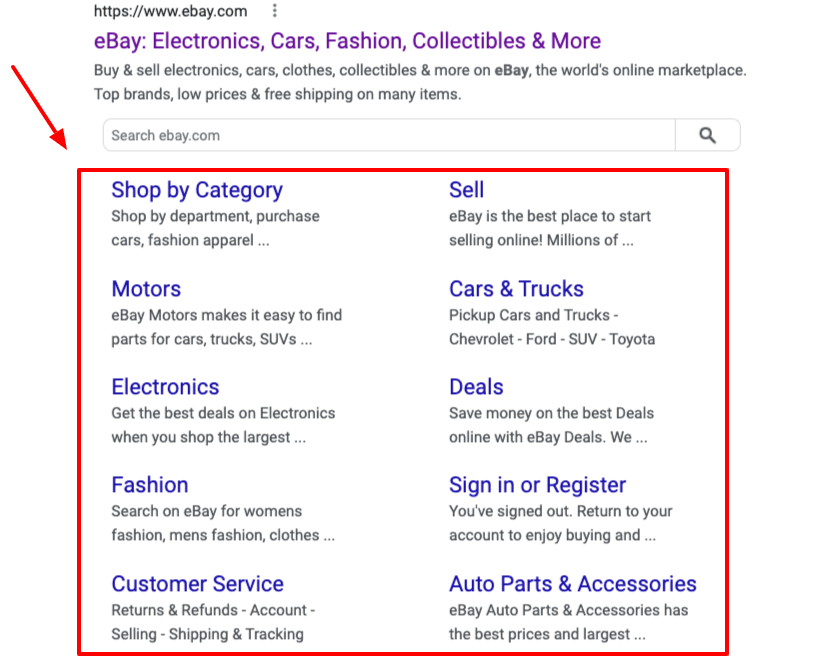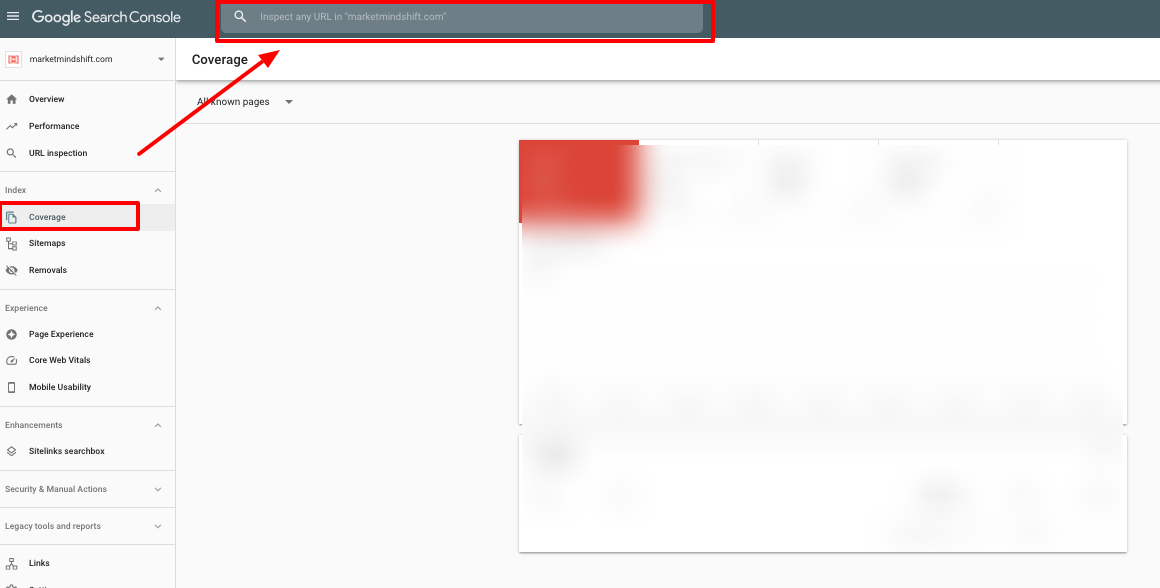Today’s Ask an SEO question comes from Anastasia in London, who asks:
“How do you demote/remove an organic sitelink to a particular page without a demoting tool in GSC?”
Anastasia, this question is a good one and something that I faced recently with a client’s website.
Before we go too far into the answer, I want to first give a general overview of what sitelinks are and how they appear in search.
Quick Sitelinks Overview
Sitelinks are links that appear in Google search results and are designed to help the searcher better navigate your website.
According to Google, the search engine analyzes “the link structure of your site to find shortcuts that will save users time and allow them to quickly find the information they’re looking for.”
Google will only display sitelinks for results when it believes it will help the searcher.
Take the following as an example. First, you see eBay’s main result and underneath you see the sitelinks.

Sitelinks can improve your click-through rate and help searchers find what they are looking for even quicker on your website.
How to Improve Your Sitelinks
Sitelinks are generated automatically through Google’s sitelinks algorithm. In the past, you could remove unwanted sitelinks — but Google did away with that tool years ago.
Now, you have to take other steps and hope that Google updates your sitelinks accordingly.
With that in mind, let’s get into some things you can do to better control your sitelinks.
1. Identify Where You Are Linking Internally to the Undesired Sitelink
First, crawl your website to determine what pages are linking to the sitelink you want to remove.
Once you have the list of pages, review and update the anchor text and internal links going to that unwanted sitelink. Then resubmit the pages in Google Search Console:

Wait several days and recheck your sitelinks in Google’s search results.
From my experience, taking the action I just described will do the trick and you should see the updated sitelinks.
2. Noindex the Page Appearing in Sitelinks
Caution! Only take this approach if the page appearing in sitelinks is one you do not want in Google’s index.
Remember that when you noindex a page, you are removing it from search results and will no longer get organic traffic.
Now that you have been warned, if the page appearing in sitelinks is one that shouldn’t be indexed, such as an old page no longer used, you might consider “noindexing” the page.
Taking this step should remove the unwanted sitelink. Here is an article that talks more about noindexing, so you can better understand what’s involved: Do Links to Noindex Pages Help SEO?
3. Use Anchor Text and Alt Text That Is Descriptive of the Link
The first two tips were based on removing a specific sitelink. This one is focused on improving the sitelinks.
In addition to using descriptive anchor text and alt text, Google also recommends that you keep the anchor text concise and avoid repetition.
4. Create a Clear Website Structure
Similar to the tip above, this one is meant to improve sitelinks.
Website structure is important in general to SEO and can also help with sitelinks. Your website should have a clear hierarchy.
Ideally, your website will be set up in such a way that you start with a more general topic (i.e., parent page) and get into a more specific topic (i.e., child page).
For example, a clear structure would look something like: Cars > Fords > Mustangs.
Internal linking is a big part of website structure and we also know that it impacts sitelinks.
Here is a great article with more information on website structure to give you more insight: Google’s John Mueller on Best Site Structure.
Conclusion
By taking these steps, you should be able to get rid of the unwanted sitelinks and also improve what shows up in Google’s search results.
More Resources:
- Internal Link Structure Best Practices to Boost Your SEO
- 10 Ways Website Structure Can Affect SEO
- Core Web Vitals: A Complete Guide
Editor’s note: Ask an SEO is a weekly SEO advice column written by some of the industry’s top SEO experts, who have been hand-picked by Search Engine Journal. Got a question about SEO? Fill out our form. You might see your answer in the next #AskanSEO post!
Image Credits
Featured image: mentalmind/Shutterstock.com
All screenshots taken by author, July 2021





![AI Overviews: We Reverse-Engineered Them So You Don't Have To [+ What You Need To Do Next]](https://www.searchenginejournal.com/wp-content/uploads/2025/04/sidebar1x-455.png)